Sharon Wheeler’s ScarWork
Call 07771611506
What is Sharon Wheeler’s ScarWork?
This specialised manual treatment was developed by a former nurse Sharon Wheeler who went on to develop as a Rolfer in the USA. Rolfing is a hands-on treatment that re-organises the connective tissue of the body (fascia). In cases of surgical injury, burns or trauma it can create a natural misalignment developing within our bodies due to gravity. Rolfing manipulation enables the tissue to function more effectively. Sharon refined her skills oevr 40 yrs and developed over 50 new hand techniques to deal with fascia that feels thick, lumpy, tight, puckered, spongy tissue or as if there is a gap to stimulate improvement. In recent years she has travelled around the world training other therapists with her own technique, knowledge, and skills to treat scar tissue, fibrosis, adhesions, and changes in tissue due to surgery and radiotherapy. She named this specialised manual treatment of fascia ScarWork.
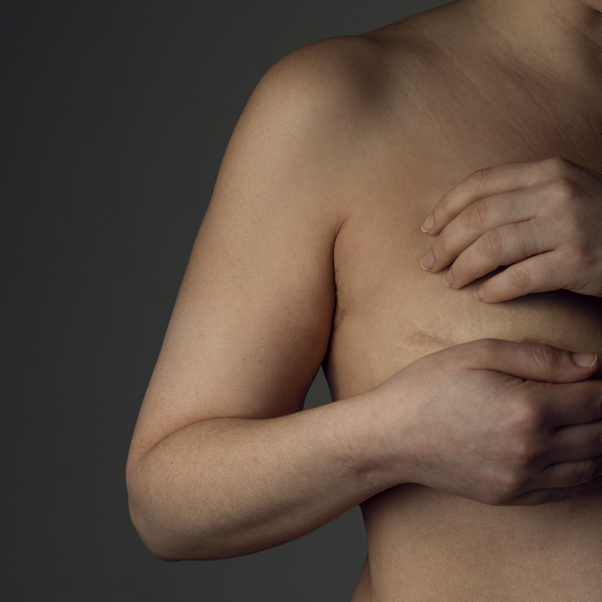
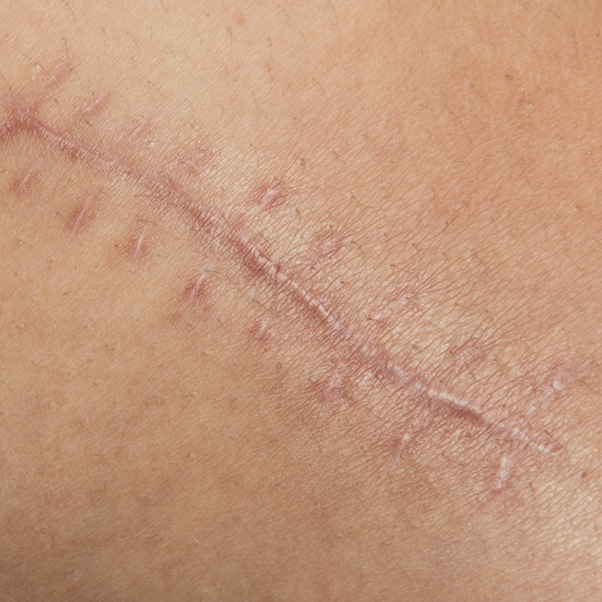
How does ScarWork work?
ScarWork involves the use of light and gentle movements over the skin (epidermis) using the fingertips and hands in specific directions and sequences to affect the layers of tissue directly underneath the skin (dermis and fascia). The fascia was once considered only a packing tissue within the body but in vivo filming by hand surgeon Jean-Claude Guimberteau has revealed fascia tissue is a moist, dynamic, and complex transport system and orthopaedic surgeon Prof Carla Stecco through cadaver dissections has shown that fascia is laid down in the body in specific patterns. She has since documented these anatomical arrangements in a book and through further exploration of fascia tissue she has discovered that fascia contributes to the strength of muscle contraction, that fascia has pain receptors around joint areas and she has discovered an new cell type named a fasciculocyte. So, one can see how fluid builds up because the transport system within fascia is disrupted and allowing toxins to build up in the tissues. This build-up of toxins and fluid can trigger an inflammatory response (swelling, heat) that in turn triggers the pain receptors within the fascia.
Misaligned fascia can create an uneven appearance of the skin because of fluid build-up or from joining the skin along the surgical incision line. Incisions create a gap in the fascia because of the cut fascia and this gap below the skin can be felt physically.
There are currently a number of fascia researchers working on the role and function of fascia to give us a deeper understanding of specific health problems.
How can ScarWork help?
Problems arise when this intricate communication system called fascia has been disrupted through a surgical incision or trauma. It causes a collapse of the railway like network and the tissue sticks together allowing fluid to build up on either side of the gap contribuitng to localised swelling that may cause discomfort. Dehydration can also contribute to ‘sticky’ fascia. For fascia to be fully hydrated 1.5-2L water need to be drunk daily to support the body as a whole AND inorder to hydrate fascia it is important to move around for at least 5-10 mins every hour to allow the water to circulate around the fascia. Immobility contrinutes to fascia becoming sticky and becoming inflammed. ScarWork manipulation helps to move the fascia closer together so that the tissue can re-connect itself through its natural dynamic behaviour. This helps it to regain its function and in doing so reduces the symptoms caused to scars by incisions or trauma.
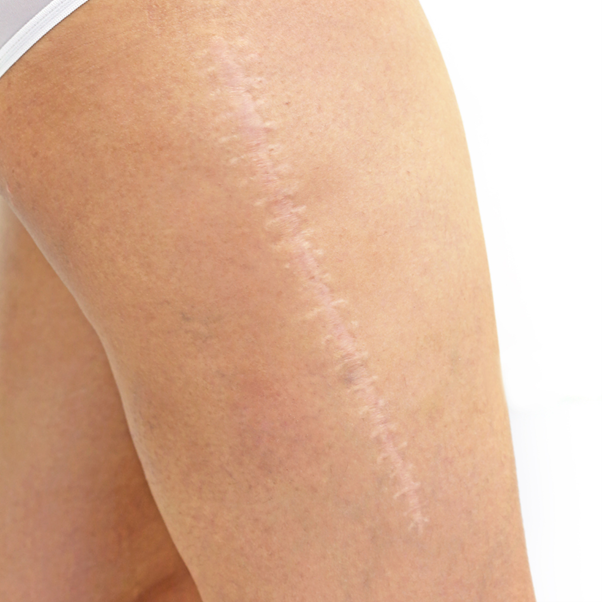
ScarWork is a gentle, pain-free, hands-on technique that can help to mobilise and soften thicker tissue in scars. Not all clients will see a visual change, but usually the scar will feel softer, smoother and looser after treatment.
ScarWork treatment is rarely painful. During treatment ScarWork techniques are always given within the client's comfort levels. The changes in the appearance or symptoms associated with a scar/s is a gradual process but changes may be visible after each treatment session.
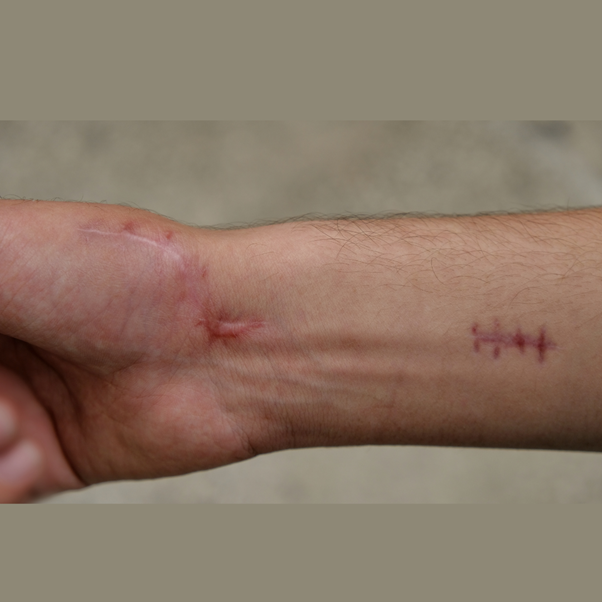
What happens in a treatment?
Your initial appointment lasts for 75 minutes and is held in a private, relaxing, safe, and comfortable environment. During this session you be asked about your medical history, symptoms you have resulting from your scar, and to clarify your goals for treatment. Follow-up sessions are for up to 1hr.
Throughout your treatment you will be an active participant in both the decision making and during treatment in giving feedback on treatment techniques so that we work together in facilitating your goal to achieve optimum recovery or to address a specific problem.
Treatment is offered directly onto the skin so that area of your body will need to be exposed to access the scar and to deliver the treatment. No creams or lotions are used on your skin. Whether your scar is on a limb due to a car/bike accident or a more intimate area due to hysterectomy, c-section, breast, or chest surgery large and small towels (single use only) will be used to keep your body covered so that your modesty and dignity will be maintained. Every care is taken to ensure you are mentally, emotionally, and physically comfortable throughout the treatment.
During the session oher treatments may be suggested for your consideration so that you can make informed decisions about your treatment plan so you can have the optimum outcome for your goal/s. Treatments such as Bowen Technique and Healing may be recommended and would not incur additional charges if related to the scar.
The ScarWork treatment starts by stimulating the uppermost layers of the skin with a range of light, gentle and repetitive strokes. This enables the dermis and superficial fascia that lies directly below the skin can be stimulated to respond. As this tissue responds your body will then present the next layer of deeper tissue and muscle layers manipulation with deeper manual techniques. Clients who may struggle with emotional or physical sensitivity about their scar or who dislike touch around their scar usually find that this improves within a couple of treatments.
Feedback will be given at the end of your treatment session and suggestions regarding aftercare appropriate to help your recovery will be offered. After each session you will notice a change in the appearance of the scar and the surrounding area, or the symptoms related to your scar. You may notice a softening of the area and a reduction in the restrictions to movement caused by the thickening of the underlying tissues and any adhesions between the layers of muscle, skin and adipose (fatty) tissue.
How many treatments are needed?
On average clients find they need between 4-8 treatments to see an improve in symptoms and scar appearance. Treatments may be 1-4 weeks apart depending on the age of the scar. A higher number of treatments will be required to reach optimal recovery or to treat additional complications post-surgery and radiation therapy. Ongoing treatment to maintain your comfort may be required for capsular contracture. Contracture may result from breast augmentation surgery, breast reconstruction implants after breast cancer surgery or from radiotherapy to treat breast cancer.
What can ScarWork be used for?
ScarWork is a technique that can be used for adults and children. It can benefit new or old surgical or trauma scars because our bodies are constantly changing by destroying, renewing and replacing its cells. This healing process tends to be faster in children compared to adults. ScarWork is able to stimulate the body to respond to the wide range of manual techniques because of this healing process.
ScarWork may be helpful for the following conditions:
- Abdominoplasty scar
- Bowel resection scar
- Breast augmentation scars
- Breast reduction scars
- Burn scars
- Cancer surgery scar
- Carcinoma and melanoma removal scars
- Childhood scars
- Caesarean section (C-Section) scar
- Drain and port scar
- Facial scars including accidents, maxillofacial surgery and hairlip scars
- Gallbladder or appendix removal scars
- Hysterectomy scar
- Joint replacement (knee, hip and shoulder)
- Keyhole surgery scar
- Mastectomy
- Wide local incision (WLI) – lumpectomy
- Breast re-construction scars from
- Transverse Upper Gracilis flap (TUG),
- Deep Inferior Epigastric Perforators flap (DIEP)
- Transverse Rectus Abdominus Myocutaneous flap (TRAM)
- Latissimus Dorsi flap (LD or LAT)
- Open Heart Surgery scar
- Scars from accidents
- Spinal surgery scar
- Keloid scars
- and many more....
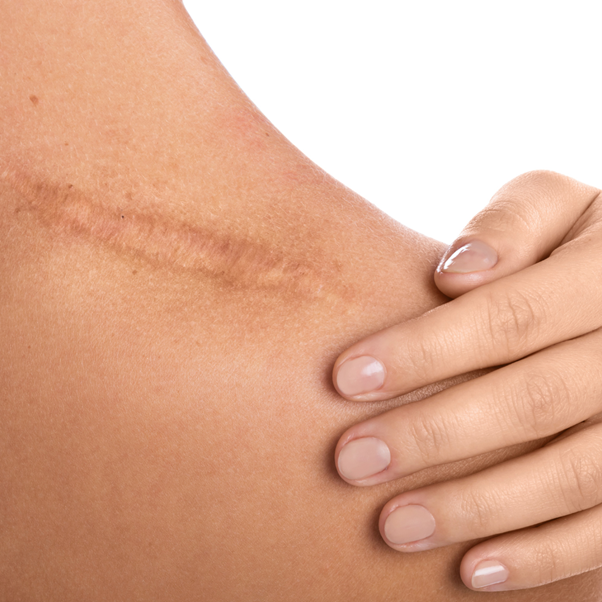
NB
- Keloid scars tend to take longer and can be less responsive to the treatment but this depends on the individual and the number of sessions undertaken.
- Hypertrophic burn scars (raised burn scars) or contracture burn scars limiting movement and function may be helped by ScarWork to improve the mobility in the skin, fascia and any adhesions of a new or older burn scar. ScarWork may also improve the appearance of the burn scar. Due to the larger surface area burn scars require ongoing treatment over several months.
When can treatments start?
Recent Surgery, including cancer surgery
Treatments can usually start 6-14 weeks after a surgery and is dependent on the type of surgery you have had, if there have been any complications and how your recovery has been to date. If you are currently under the care of a consultant please discuss your intention to have scarwork with your surgeon/specialist Dr as s/he can advise you on when you can start to receive the treatment. Do not wait until 6-14 weeks, arrange a free cintroductory chat so thatthe therapist can liaise with your consultant, with your permission, about the treatment and seek guidance / agreement from him/her about you receiving treatment in conjunction with other treatments such as radiation and chemotherapy, that the surgical incision has healed and can be worked upon and information about implants, or areas to avoid intense, direct work due to mesh, screws, plates etc. Receiving ScarWork post-surgery and before radiation treatment may be helpful to reduce complications in scar healing and tissue fibrosis.
ScarWork is a treatment that is complementary to your conventional treatment and in collaboration with you and your Dr / Surgeon/ Specialist it may maximise your treatment outcome.
Older scars
Following treatment your GP will receive a summary ot the treatment received and any benefits gained.
Diagnosis of Cancer
We have many clients who have undergone surgery for cancer. If you are still under consultant care following a cancer diagnosis, you will be asked to contact your consultant prior to treatment to check that there are no reasons why treatment would be considered as unsuitable. If possible, post surgery but before radiotherapy having a scar treatment may be helpful as often complications in scar healing and tissue radiation fibrosis syndrome (RFS) can occur.
Health Insurance
At present ScarWork is not covered by health insurances. You can access treatments not listed by your health insurance provider. Please check your policy as it may be possible to negotiate the cost of a package of treatment (14 sessions) as a once off occurrence. Alternately Maria is a registered nurse and the cost of a nurse is included in many health insurances. Your consultant may be able to support your claim by ordering ScarWork from a nurse to aid your recovery. Please contact Maria.
How do I make an appointment?
Please call or text 07771 611506 for an initial free discussion. Payment for treatment is made at the time of booking. Paypal offers you the opportunity to spread the cost of treatment over 3 months. Once payment has been received a form will be sent to you to complete prior to your appointment.
